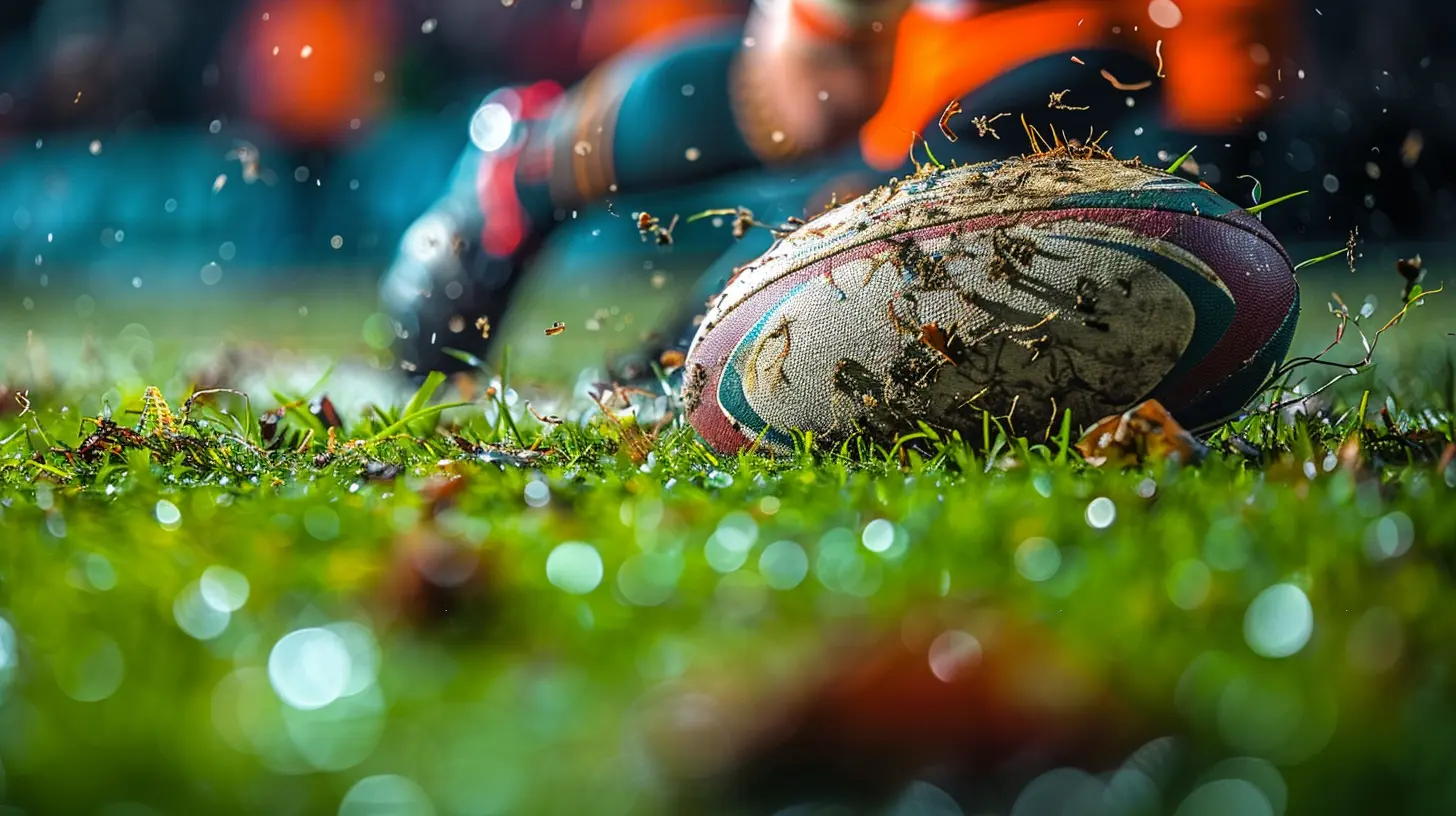How Rugby Union and Rugby League Differ: A Closer Look
16 May 2025
Rugby is a sport that’s filled with intense action, brute strength, and incredible teamwork. But if you’ve ever found yourself confused between Rugby Union and Rugby League, you're not alone. While they may seem similar to the untrained eye, these two versions of rugby have major differences in rules, gameplay, and overall strategy.
If you've ever wondered why Rugby Union has scrums while Rugby League has quick play-the-balls, or why one has 15 players while the other has 13, this article will break it all down for you. Let’s take a deep dive into the key differences between these two sports.

A Brief History of the Split
To understand the differences between Rugby Union and Rugby League, we need to rewind to the late 19th century.Rugby was originally a single sport, but in 1895, a major disagreement over payments for players caused a split. Clubs in Northern England wanted to compensate players for missing work, while the traditionalists in the south insisted on keeping rugby strictly amateur. This led to the formation of the Rugby League.
From there, the two versions evolved separately, developing distinct rules, strategies, and cultures.

Number of Players
One of the most noticeable differences between the two codes is the number of players on the field.- Rugby Union: Each team plays with 15 players. This leads to more structured gameplay, with set pieces like scrums and lineouts being a huge part of the game.
- Rugby League: Teams field only 13 players, which speeds up the game and creates more open play situations.
Removing two players in Rugby League may not sound like much, but it significantly impacts how teams strategize and play. Fewer players mean fewer rucks and mauls, leading to a much faster pace.

Possession and Gameplay Style
Possession rules in Rugby Union and Rugby League are vastly different and greatly impact the flow of the game.Rugby Union: A Battle for Possession
In Rugby Union, possession is a continuous contest. Players can slow the game down by forming rucks and mauls, and turnovers are common.- Teams can compete for possession at breakdowns, lineouts, and scrums.
- The game emphasizes territory control and structured phases of attack.
- Kicking for territory is a common strategy, as there are multiple ways to regain possession.
This makes Rugby Union more of a tactical chess match, where controlling the ball and field position are crucial.
Rugby League: Set Phases and Faster Play
In Rugby League, possession follows a more structured approach.- Teams are allowed six tackles (similar to downs in American football). After the sixth tackle, they must either kick or risk turning over possession.
- There are no rucks or mauls—when a player is tackled, they must perform a play-the-ball, where they roll the ball back to a teammate to restart play.
- This results in a much faster, end-to-end style of rugby with fewer stoppages.
The structured six-tackle rule forces teams to maximize every phase, keeping the game moving at a high tempo.

Points System
Both codes of rugby use similar scoring methods, but the point values differ.| Event | Rugby Union | Rugby League |
|-----------------|------------|--------------|
| Try | 5 points | 4 points |
| Conversion | 2 points | 2 points |
| Penalty Goal| 3 points | 2 points |
| Drop Goal | 3 points | 1 point |
Rugby Union rewards penalty goals and drop goals more because it’s a game where accumulating points through tactical kicking can be vital. In Rugby League, scoring tries is prioritized since the game is more continuous and fast-paced.
The Role of Scrums and Lineouts
If you enjoy massive scrums and towering lineouts, you’ll definitely prefer Rugby Union.- Scrums in Rugby Union: A key part of the game, scrums involve eight forwards locking together to fight for the ball. It’s a structured contest and can sometimes dictate the flow of a match.
- Scrums in Rugby League: There are still scrums, but they are uncontested and mainly serve as a way to restart play rather than a genuine competition.
Additionally, Rugby League doesn’t use lineouts. Instead, when the ball goes out of bounds, play restarts with a simple tap or a scrum.
Tackling & Defense Strategy
Both versions of rugby involve big tackles, but the way defense works is quite different.Rugby Union: Slower Defensive Play
- Teams contest for possession after every tackle, leading to rucks where multiple players engage.- Defenses are designed to slow the opposition down, often competing fiercely at the breakdown.
- Tacklers must release the ball carrier, leading to messy, contested situations.
Rugby League: Set Defensive Lines
- Defenders have to retreat 10 meters after each tackle, creating more space for the attacking team.- No breakdowns—once tackled, a player gets up and plays the ball back quickly.
- Defense consists of line-speed and structured formations to stop advancing attackers.
This makes Rugby League more structured in defense, while Rugby Union relies more on common turnover battles.
Fitness and Stamina Requirements
While both versions of the sport demand immense physicality, Rugby League players generally need greater endurance due to fewer stoppages.- Rugby Union: More stoppages mean players get short rests during scrums and lineouts. However, they need strength for rucks, mauls, and scrums.
- Rugby League: Players run more and have fewer stoppages, requiring more stamina and quicker recovery between efforts.
If you're watching both games, you'll notice Rugby League rarely pauses for breath, whereas Rugby Union often has breaks for scrums and penalties.
The Cultural Divide
Despite their differences, both forms of rugby have passionate followings.- Rugby Union tends to have a more global reach, with strong traditions in England, New Zealand, South Africa, and France.
- Rugby League is hugely popular in Australia, Northern England, and parts of Papua New Guinea.
Union is often seen as the more "traditional" version of the game, while League is considered the more high-intensity, entertaining spectacle.
Which One Is Better?
Honestly, that depends on what you’re looking for in a game.- If you love strategic battles, big scrums, and a slower, tactical approach, Rugby Union might be your game.
- If you prefer fast-paced, end-to-end action with fewer stoppages, then Rugby League is probably more up your alley.
Either way, both sports offer incredible athleticism, teamwork, and bruising tackles. The real winner? The fans who get to enjoy both versions of this thrilling sport!
all images in this post were generated using AI tools
Category:
RugbyAuthor:

Ruben McCloud
Discussion
rate this article
3 comments
Zara Ross
Ah yes, because nothing says "fun" like dissecting two sports that both involve roughly 15 people chasing an oddly shaped ball—who knew one could be so rivetingly different from the other?
May 31, 2025 at 11:03 AM

Ruben McCloud
I appreciate your perspective! While they may seem similar at a glance, the distinct rules and strategies make each sport uniquely fascinating.
Hudson Willis
Rugby Union and Rugby League: where the only thing they have in common is the word 'rugby' and the ability to make fans yell at the TV like they're coaching from the couch. One game has more players, but both require a good supply of band-aids!
May 25, 2025 at 11:28 AM

Ruben McCloud
Absolutely! While both games share the name "rugby," their rules, gameplay, and team dynamics create distinct experiences that fuel passionate debates among fans.
Valen Pruitt
Rugby Union and League each have their unique charm—like choosing between coffee and tea, both are great!
May 16, 2025 at 7:14 PM

Ruben McCloud
Absolutely! Both codes offer distinct experiences and appeal to different fans—each has its own allure!



